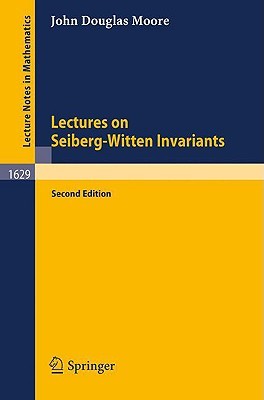| Lectures on Seiberg-Witten Invariants 2001 Edition Contributor(s): Moore, John D. (Author) |
|
 |
ISBN: 3540412212 ISBN-13: 9783540412212 Publisher: Springer OUR PRICE: $42.74 Product Type: Paperback Published: April 2001 Annotation: This book gives a streamlined introduction to the theory of Seiberg-Witten invariants suitable for second-year graduate students. These invariants can be used to prove that there are many compact topological four-manifolds which have more than one smooth structure, and that others have no smooth structure at all. This topic provides an excellent example of how global analysis techniques, which have been developed to study nonlinear partial differential equations, can be applied to the solution of interesting geometrical problems. In the second edition, some material has been expanded for better comprehension. |
| Additional Information |
| BISAC Categories: - Mathematics | Mathematical Analysis - Mathematics | Geometry - Algebraic - Mathematics | Applied |
| Dewey: 514.74 |
| LCCN: 2001020984 |
| Series: Lecture Notes in Mathematics |
| Physical Information: 0.29" H x 6.14" W x 9.21" (0.44 lbs) 121 pages |
| Descriptions, Reviews, Etc. |
| Publisher Description: Riemannian, symplectic and complex geometry are often studied by means ofsolutions to systems ofnonlinear differential equations, such as the equa- tions of geodesics, minimal surfaces, pseudoholomorphic curves and Yang- Mills connections. For studying such equations, a new unified technology has been developed, involving analysis on infinite-dimensional manifolds. A striking applications of the new technology is Donaldson's theory of "anti-self-dual" connections on SU(2)-bundles over four-manifolds, which applies the Yang-Mills equations from mathematical physics to shed light on the relationship between the classification of topological and smooth four-manifolds. This reverses the expected direction of application from topology to differential equations to mathematical physics. Even though the Yang-Mills equations are only mildly nonlinear, a prodigious amount of nonlinear analysis is necessary to fully understand the properties of the space of solutions. . At our present state of knowledge, understanding smooth structures on topological four-manifolds seems to require nonlinear as opposed to linear PDE's. It is therefore quite surprising that there is a set of PDE's which are even less nonlinear than the Yang-Mills equation, but can yield many of the most important results from Donaldson's theory. These are the Seiberg-Witte equations. These lecture notes stem from a graduate course given at the University of California in Santa Barbara during the spring quarter of 1995. The objective was to make the Seiberg-Witten approach to Donaldson theory accessible to second-year graduate students who had already taken basic courses in differential geometry and algebraic topology. |